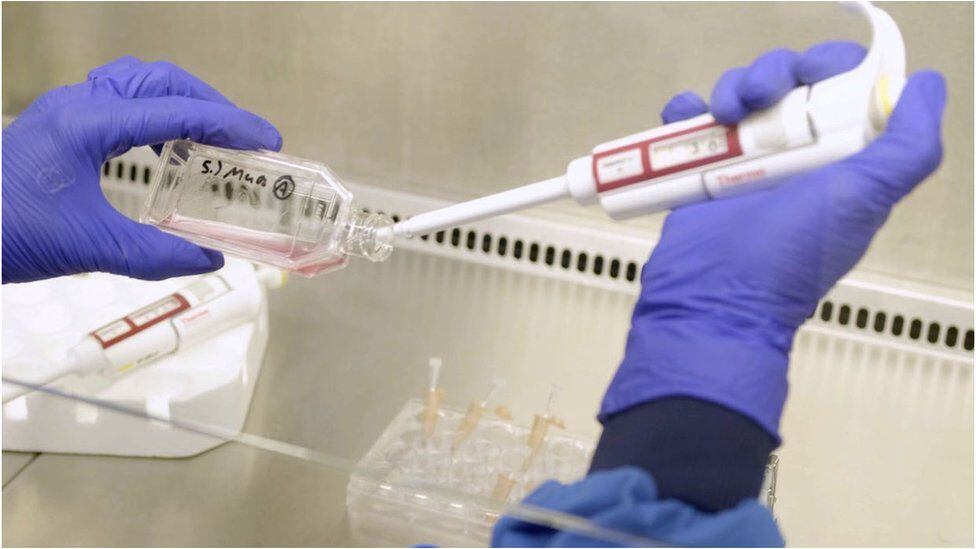researchers from United Kingdom They said several patients received lab-created blood during an unprecedented clinical trial.
LOOK: UK: Armed Detainees Cause ‘riot’ at Migrant Holding Center
They’re using minute amounts of artificial blood – the equivalent of a couple of teaspoons – to see how it behaves inside the body.
Currently, most blood transfusions depend on for people to donate.
The ultimate goal of this experiment is to manufacture some ultra-rare blood groups in the laboratorywhich are vital to some people but hard to come by.
These blood groups are needed to care for people who depend on regular blood transfusions such as those with conditions such as sickle cell anemia.
If the blood is not an exact match, the body begins to reject it. and the treatment fails. This level of compatibility goes beyond the well-known blood groups A, B, AB and O.
Professor Ashley Toye, from the University of Bristol, said some groups were “very, very rare” and that “there could be only 10 people in the countryable to donate.
At the moment, there are only three units of the “Bombay” blood group – first identified in India – in stock in the whole of the UK.
So how is blood cultured?
This research project combines teams in Bristol, Cambridge, London, and from the NHS blood and donations unit. Its focus is the red blood cells that carry oxygen from the lungs to the rest of the body.
Is that how it works:
“We want to produce as much blood as possible in the future, so the vision in my head is a room full of machines continuously producing it from a normal blood donation,” Professor Toye told me.
The proof

Two volunteers were the first to take part in the trial, which seeks to test blood in at least 10 healthy individuals. They will receive two donations of 5-10 ml at least four months apart: one of normal blood and one of laboratory-cultured blood.
The artificial blood is tagged with a radioactive substance, which is usually used in medical procedures so scientists can see how long it lasts in the body.
Laboratory-grown blood is expected to be more potent than normal.
Red blood cells normally last about 120 days before they need to be replaced. A typical blood donation contains a mixture of both young and old red blood cells, while lab-grown blood is freshly made, so it should last the full 120 days. The researchers suspect this could allow for smaller, less frequent donations in the future.
However, there are considerable financial and technological challenges.
An average blood donation costs the NHS around US$150. Making the blood in a lab will cost much more, though the team didn’t say how much.
Another challenge is that the stem cells collected eventually run out, limiting the amount of blood that can be cultured. More research will be needed to produce the volumes that are clinically needed.
Dr Farrukh Shah, NHS Transfusion Medical Director said: “This world-leading research lays the groundwork for making red blood cells that can be used safely with people with disorders such as sickle cell.”
Source: Elcomercio
I, Ronald Payne, am a journalist and author who dedicated his life to telling the stories that need to be said. I have over 7 years of experience as a reporter and editor, covering everything from politics to business to crime.

:quality(75)/cloudfront-us-east-1.images.arcpublishing.com/elcomercio/GIYDCOJNGEYS2MBXKQYDAORSGA.jpg)


:quality(75)/cloudfront-us-east-1.images.arcpublishing.com/elcomercio/DJ5UUQ444ZCKXD2CYSN4XFPVOQ.jpg)
:quality(75)/cloudfront-us-east-1.images.arcpublishing.com/elcomercio/2YR2ZWIZSNFR3D5DK4EPSP55YA.jpg)
:quality(75)/cloudfront-us-east-1.images.arcpublishing.com/elcomercio/6T5VR63ZIVHVHIZXGIZCSUVBCM.jpg)
